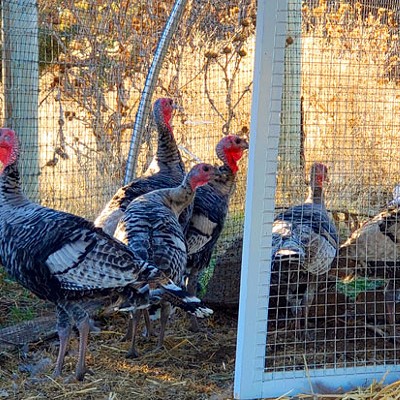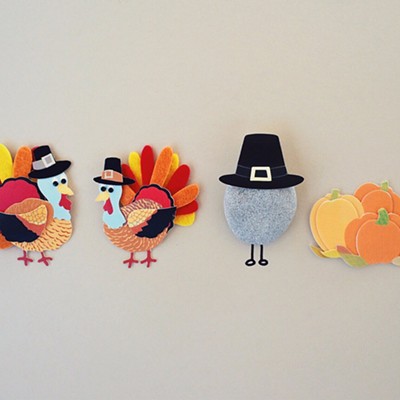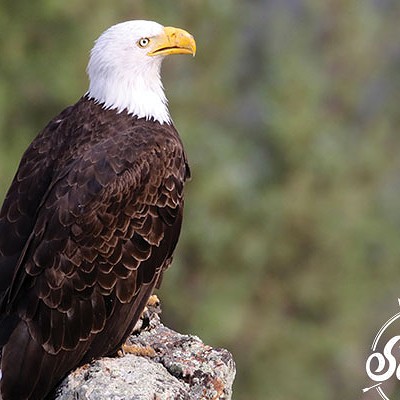Benjamin Franklin, who had a pretty good head on his shoulders, and did a great many good things for our country, liked turkeys better than eagles. That choice almost screwed up the works for having the bald eagle (Haliaeetus leucocephalus) as our National Symbol. Franklin preferred the wild turkey.
Now, I ask you, how can you soar with eagles, when you're running around with turkeys? Oh, about that unpronounceable last Latin name for the bald eagle; it's from Greek hali=sea, aitos=eagle, leuco=white, cephalos=head, which makes sense when you think Latin, which has little to do with Benjamin Franklin's opinion of the eagle as a, "lazy, dishonorable bird."
This is a letter Franklin wrote to his sister, Sally, in 1784, after the Continental Congress had voted on and passed the choice of making the bald eagle our national symbol:
"For my own part I wish the Bald Eagle had not been chosen the Representative of our Country. He is a Bird of bad moral Character. He does not get his Living honestly. You may have seen him perched on some dead Tree near the River, where, too lazy to fish for himself, he watches the Labour of the Fishing Hawk; and when that diligent Bird has at length taken a Fish, and is bearing it to his Nest for the Support of his Mate and young Ones, the Bald Eagle pursues him and takes it from him."
The letter goes on, "With all this Injustice, he is never in good Case but like those among Men who live by Sharping & Robbing he is generally poor and often very lousy. Besides he is a rank Coward: The little King Bird not bigger than a Sparrow attacks him boldly and drives him out of the District. He is therefore by no means a proper Emblem for the brave and honest Cincinnati of America who have driven all the King birds from our Country."
And he doesn't stop there. "I am on this account not displeased that the Figure is not known as a Bald Eagle, but looks more like a Turkey. For the Truth the Turkey is in Comparison a much more respectable Bird, and withal a true original Native of America...He is besides, though a little vain & silly, a Bird of Courage, and would not hesitate to attack a Grenadier of the British Guards who should presume to invade his Farm Yard with a red Coat on."
True, bald eagles go to great lengths to pounce upon an Osprey once it snatches a fish from the water and heads for home with it. To Franklin, this was abominable and proved (to him) the bald eagle was nothing but a dishonorable, thieving rascal. However, to the Laws of Nature it was appropriate. Convincing the Osprey to drop its fish saved a great deal of energy or the eagle — and it received more energy then capturing a fish, it was easier to chase the Osprey and grab the fish when dropped.
Franklin also had other candidates for our national symbol: the rattlesnake for example. In his letter published in 1775, he made a good case for the rattlesnake as an appropriate symbol of, "the temper and conduct of America." Please keep that in mind all you guys that just HAVE to kill every poor old rattler you see. Remember the slogan, "Don't tread on me."
In 1776, Franklin made an "official suggestion" while on the committee Congress appointed on July 4th to design the Great Seal. His idea was an action scene with Moses and Pharaoh, which the committee recommended for the reverse side of the Great Seal.
Then he reiterated his dislike of the eagle: "Because of their size, bald eagles are not concerned about threats from other birds. However, eagles are often chased by smaller birds, who are trying to protect their young." It was Benjamin Franklin's observations of a bald eagle either ignoring or retreating from such mobbing that probably led to his claim of the bald eagle's lack of courage.
Perhaps that's another example of using discretion and wisdom before starting a fight you can't win.
Several other types of birds were suggested by Franklin in the preliminary Great Seal designs: a rooster, a dove, a phoenix rising from flames, as well as a two-headed imperial eagle.
According to the U.S. National Archives, the eagle got a free pass in 1782 to symbolize America, when a drawing of the eagle was presented to the newly-formed Congress. It was immediately accepted, and soon an olive branch and arrows (representing peace and war, respectively) were included in the eagle's talons. And I like the national symbol we have. It is no longer endangered, you can find a bald eagle in just about every state in the continental United States.
Then too, President John F. Kennedy added to the list of noble descriptors when he wrote to Charles Callison of the National Audubon Society on July 18, 1961: "The founding fathers made an appropriate choice when they selected the bald eagle as the emblem of our Nation. The fierce beauty and proud independence of this great bird aptly symbolizes the strength and freedom of America."
So, the next time you're in Sisters, and you get caught in a turkey traffic jam out on Camp Polk Road, just think if Franklin had gotten his way it could be a whole flock of roosters instead.


























